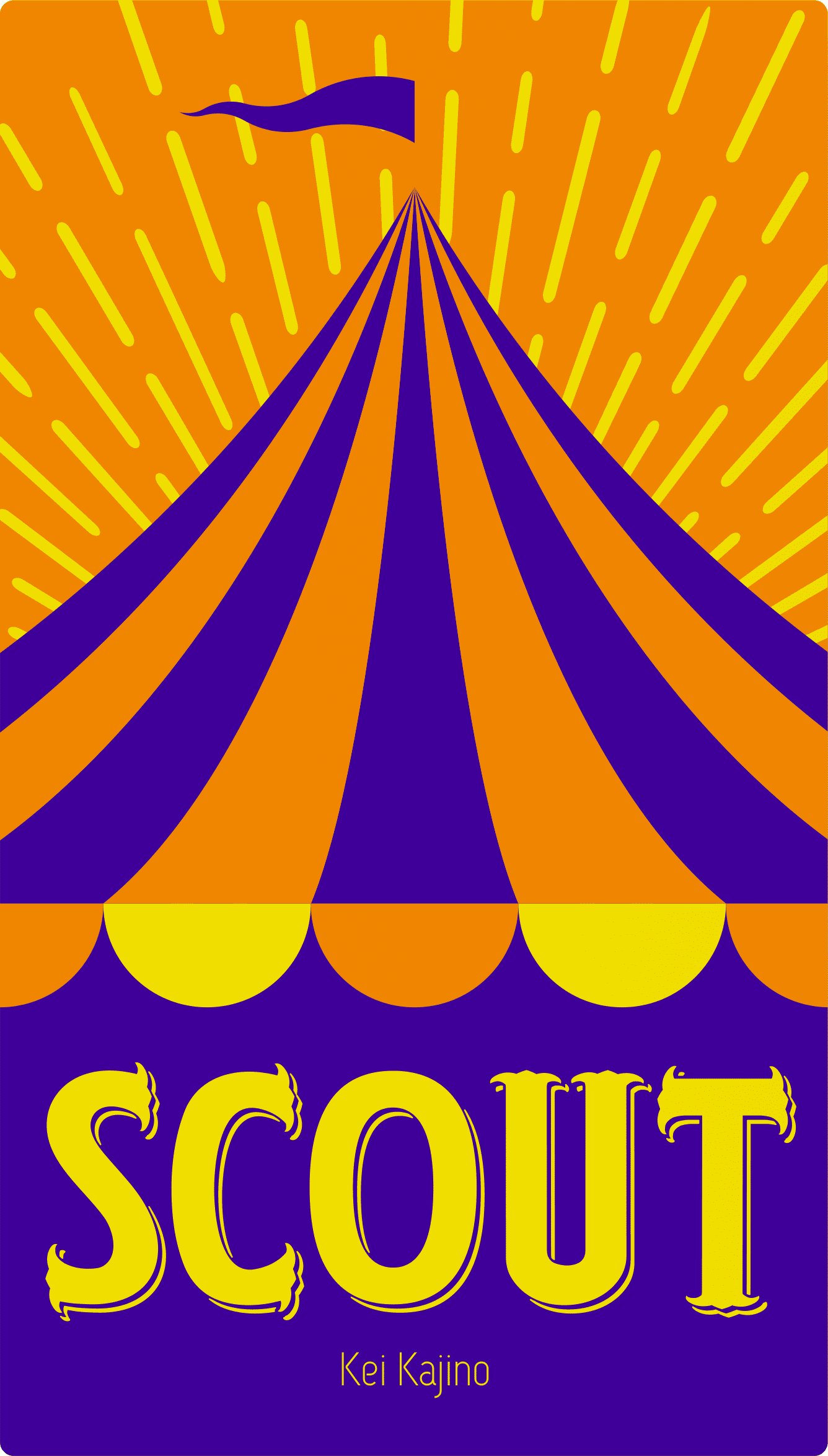Scout has quickly raced to the top of the must-have Oink Games list, fuelled in no small part by Tom Brewster’s Shut Up & Sit Down review a few months back. If you’ve seen it (if you haven’t, you’ve no excuse, I’ve linked to it there for Heaven’s sake) you’ll know just how enthusiastic he is about the game, and with good reason. Scout is a fantastic game. It’s about as much fun as you’re likely to find in a box no bigger than a hamster’s coffin tiny wee bed.
Quick and easy
On the surface, it’s easy to say Scout is a set collection game. The truth is that it’s more of a ‘carefully craft a set and then get rid of it’ game. Each player has a hand of cards, and each card has two different values: one at the top of the card, and one at the bottom. After you’re dealt your hand, you can choose which way up you want to hold it, but you – and this bit’s important now – may not change the order of the cards. The gods of the shuffle have decreed that you will receive these cards, and you will have them in this order. Fiddling with that order will result in a smiting.
Something like that anyway.

The only time your cards get new neighbours is when you ‘Show’, or when you ‘Scout’, each of which being the actions you can take. To Show, you take a set of cards from your hand (either cards of the same value, or a run of ascending or descending cards), and play them to the middle of the table. You only get to Show if your set is better than what’s already on the table at the time. The cards you beat get flipped over and added to your stash of points, you greedy little piggy.
Scouting entails choosing any card from those in the current Show, and adding it to your hand. You can choose to put it wherever you like in your hand, and whichever way up you like too. Powerful stuff in a game so prescriptive about what you can do. The penalty for this? The person whose card you take gets a point token from the supply.
You know how to play Scout now, you lucky devil. “But Adam, you go on about how you don’t like to do rules explanations, you hypocrite”. Yeah, yeah, I know. Forgive me this once, it’s a small card game. I need the word count.
Hidden depth
You’ll find all manner of hidden layers of depth once you’ve played a couple of games of Scout. You’ll start setting up combos in your hand so that you can play that rubbish set of three 2s, just so that the cards on either side clash together in their absence, setting up a run so formidable we dare not even imagine it. It’s a bit like Zuma in that respect.
You remember – Zuma? Oh go on, you do. That Popcap game from years back, where you’re some kind of rotating, magical frog, which spits coloured balls at balls on a track? Yeah, that one. That’s a bit like Scout, only different.

Player count is pretty important in Scout. You can play with anything from two to five players, but four or five is where it’s best. A round ends when the turn comes back around to the owner of the set in the middle of the table after nobody was able to beat it. In three players, that’s a short time, but with more players, there’s ample opportunity to plan and execute your shenanigans.
I really appreciate how easy it is to grasp not only how to play Scout, but to start picking up on the nuances of strategy. It’s a game which really rewards repeated play with the same people, in much the same way something like No Thanks does.
Final thoughts
There’s really not too much more to tell you about Scout. Often, I’m here trying to help champion smaller, less well-known games. For example, I was delighted when I was able to shine my little light on the likes of games like Zuuli and Cosmic Voyage, both of which did deservedly well. With Scout, I feel like I’m on the receiving end for a change.
I never played the version with the original artwork, published by One More Game! A game by a Japanese designer, printed by a Japanese publisher, is always going to find it hard to gain traction in the West. But with Oink Games picking up the baton and bringing it to a clamorous rest of the world, both you and I can pick up a copy without an esoteric knowledge of games and a bottomless wallet. In fact that’s exactly what I did, with my own pennies. I caught wind of the bubbling-under and grabbed a copy from Oink’s stand at the UK Games Expo last year.

There are very few reasons not to own a copy of Scout in all honesty. I haven’t met anyone who bounced off it hard yet, and for the price you’ve got a clever, entertaining game in a gorgeous little box. It’s the kind of game I’d take to the pub and not be too worried about having a clean table for. As testament to that, I took it to play with colleagues at the cafe of the university I work for. Yeah, the same tables those students were using… Scout is amazing, just go and get it.
Enjoying this article? Consider supporting me.

Scout (2019)
Designer: Kei Kajino
Publisher: Oink Games
Art: Rie Komatsuzaki, Jun Sasaki, sinc
Players: 2-5
Playing time: 15 mins


